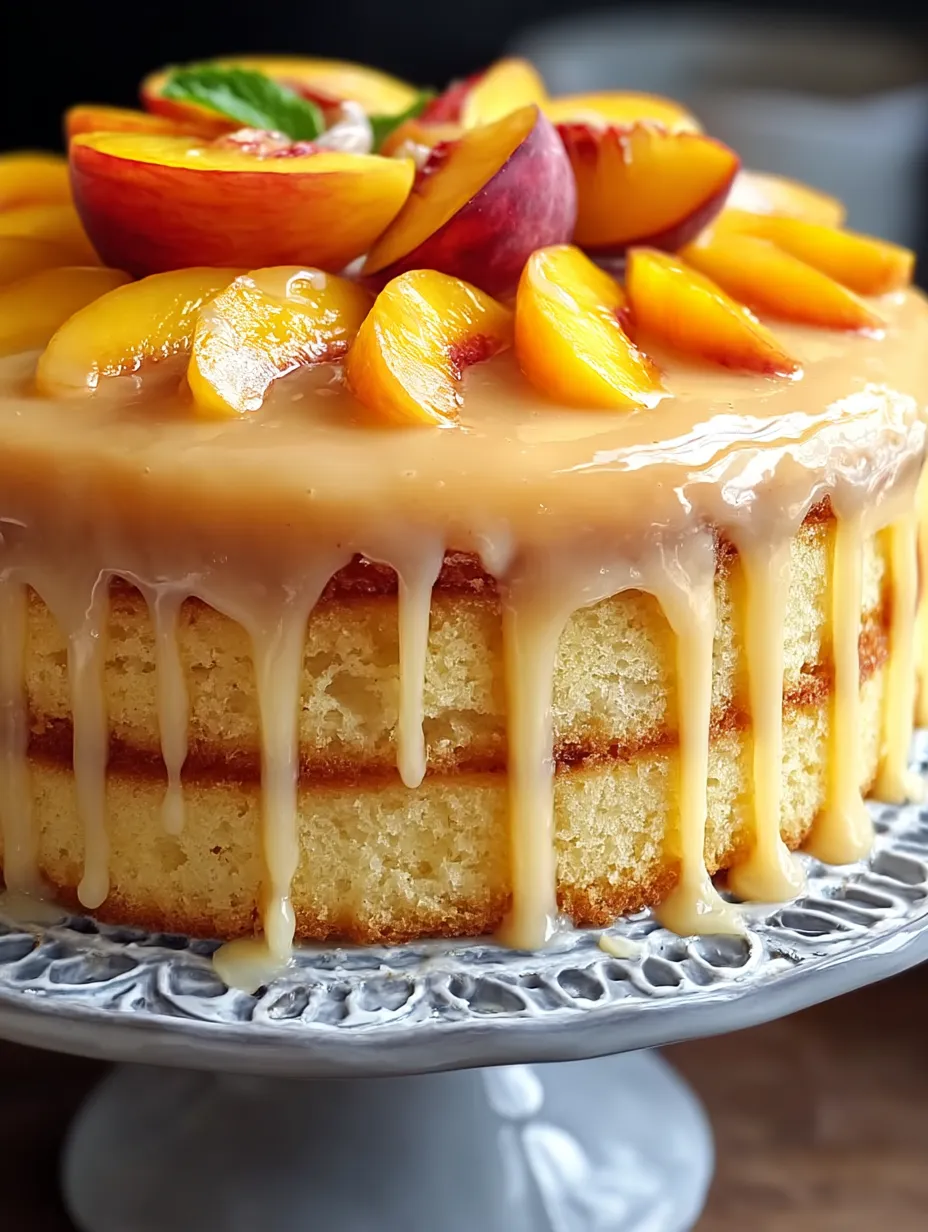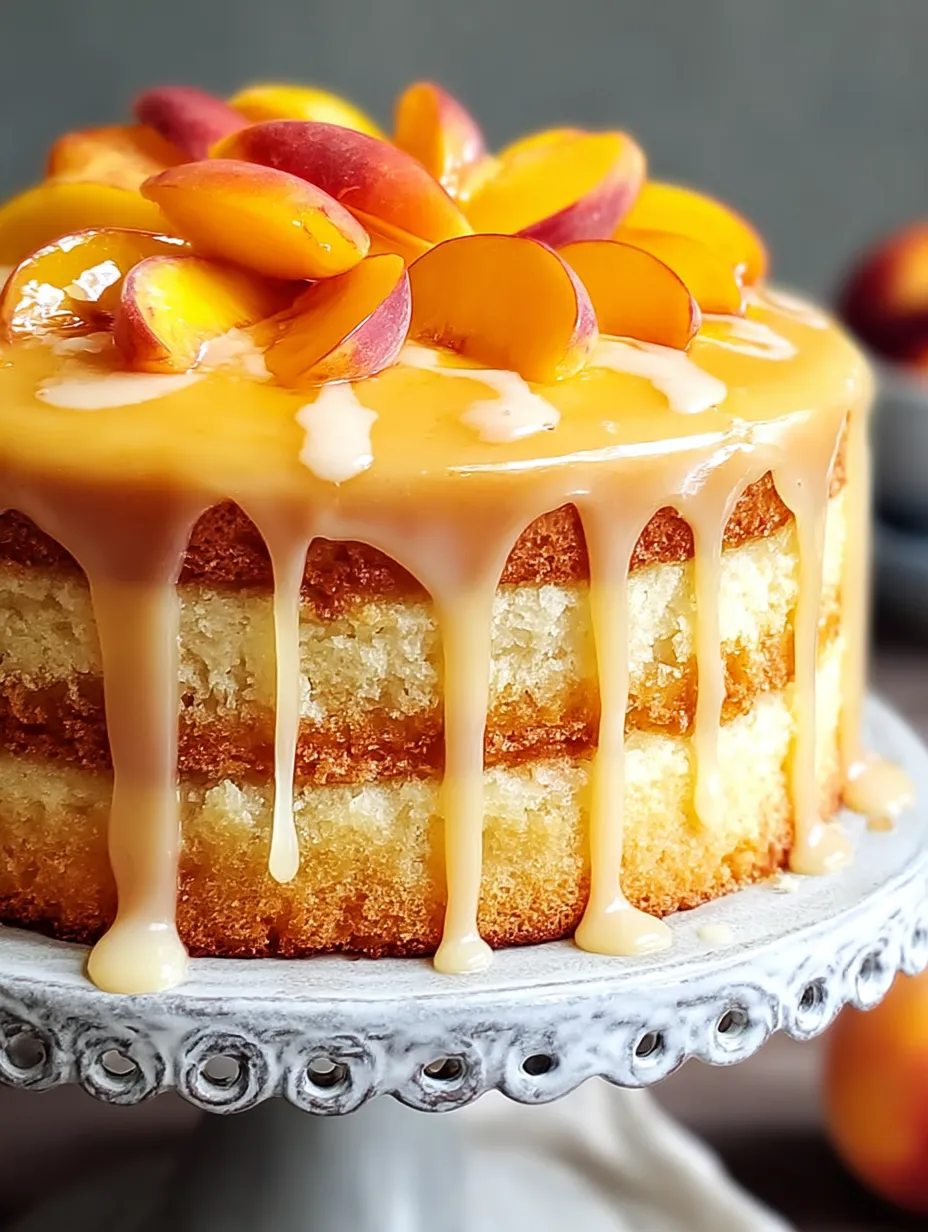 Save Pin
Save Pin
This down-home peach buttermilk pound cake turns basic kitchen staples into a delicious treat that brings the warmth of Southern charm right to your table. Juicy peaches mixed with tangy buttermilk work together to create an incredibly soft cake that'll melt right in your mouth with every single bite.
I baked this cake for the first time at our family get-together in Georgia one summer and it was gone faster than you could say sweet tea. The biggest win? My grandma pulled me aside later asking for my secret—that's about the best compliment any Southern baker can get!
Ingredients
- Unsalted butter: Make sure it's room temperature so it creams properly and builds the cake's structure
- Granulated sugar: Regular white sugar gives just enough sweetness without drowning out the peach taste
- Large eggs: Adds richness and holds everything together
- All purpose flour: The cake's base—grab unbleached for top results
- Baking soda: Works with the buttermilk to make the cake rise and stay tender
- Salt: Brings out all the flavors, especially the peach sweetness
- Buttermilk: Real cultured stuff gives that special tang and keeps your cake moist for days
- Vanilla extract: Stick with pure instead of imitation for the real deal flavor
- Almond extract: The hidden helper that makes peach flavor pop
- Fresh peaches: Best when they're in season, but don't worry—frozen or canned work great in winter months
Step-by-Step Instructions
- Preparation:
- Set your oven to 325°F—a bit cooler than most cakes use but it'll bake this thick batter just right. Coat every nook of your bundt pan with butter or shortening, then dust with flour and tap out what doesn't stick. This careful prep means your cake won't get stuck.
- Creaming Butter and Sugar:
- Beat your room temp butter for a full minute until smooth before slowly adding sugar. Keep beating for 4-5 more minutes until it's really fluffy and light. This long beating makes tiny air bubbles that give your cake that soft bite. You'll know it's ready when it looks pale and seems bigger in the bowl.
- Adding Eggs:
- Drop in eggs one at a time, beating 30 seconds after each. This slow approach stops the mix from splitting and makes sure each egg blends in completely. Don't forget to scrape the bowl between additions.
- Preparing Dry Ingredients:
- Mix flour, baking soda and salt in another bowl. Mixing them together now stops any bitter spots from forming in your finished cake.
- Creating the Batter:
- Add your dry mix to the butter mixture in three batches, switching with buttermilk, starting and ending with the flour. Mix on low just until it comes together each time. Don't mix too much or your cake will get tough.
- Adding Flavor Enhancers:
- Stir in the vanilla and almond extracts just enough to mix them in. They work together to make a sweet background that works with the peaches without taking over.
- Incorporating Peaches:
- Roll peach chunks in a spoon of flour so they don't all sink to the bottom. Fold them into your batter gently with a rubber spatula, using a cutting motion to keep all those air bubbles you worked so hard to make.
- Baking to Perfection:
- Pour the batter into your ready pan and smooth the top lightly. Bake it in the middle of the oven for 70-80 minutes. It's done when a wooden pick comes out with just a few moist crumbs. Try not to open the oven for the first hour.
- Cooling Process:
- Let the cake sit in the pan for exactly 20 minutes. This timing matters—too quick and it'll fall apart, too long and it'll stick. Then flip it onto a cooling rack and let it cool completely for at least 2 hours before cutting.
 Save Pin
Save Pin
Don't skip the almond extract—it sounds odd but it really wakes up the peach flavor like nothing else. My grandma always told me the trick to amazing peach desserts was just a hint of almond. This cake proves her right every time, especially when you use peaches picked ripe from trees in the Georgia sunshine.
Mastering the Perfect Texture
The secret to this pound cake's amazing texture is taking your time. Don't rush through beating the butter and sugar. Those full 5 minutes of mixing put air into the batter that builds your cake's structure. If your cake turns out heavy instead of soft, you probably cut the creaming time short. Look for the mix to get almost white and grow much bigger before moving on.
Seasonal Adaptations
Summer peaches make the most fragrant cake, but frozen ones work great all year long. If you're using frozen peaches, don't thaw them all the way before adding them in. Partial thawing keeps extra water from making your cake soggy. With canned peaches, drain them really well and pat them dry with paper towels before mixing them in. During cold months, try adding a sprinkle of cinnamon to bring back that summer feeling.
Serving Suggestions
This cake tastes great just as it is, but turns into something special when served warm with a scoop of vanilla ice cream on top. For a breakfast treat, drizzle slices with an easy glaze made from powdered sugar and fresh peach juice. I love it lightly toasted under the broiler with a thin layer of salted butter—the buttery saltiness works so well with the cake's sweetness.
 Save Pin
Save Pin
Southern Heritage Notes
This cake comes from the old Southern tradition of using what's in season. Country cooks knew buttermilk wasn't just good for using up dairy leftovers—it also made baked goods extra tender. This combo got really popular during peach season when families would save the harvest any way they could, including these rich, dense cakes that stayed moist for days even in the sticky Southern summer heat. The almond extract shows how European baking ideas mixed into Southern cooking over time.
Common Recipe Questions
- → Can I use canned peaches instead of fresh?
Sure thing! Canned or frozen peaches work fine when fresh ones aren't around. Just make sure you drain them well before mixing them in.
- → How do I prevent peaches from sinking in the batter?
Just coat your diced peaches with a spoonful of flour before you mix them in. This trick helps them stay put throughout the cake while it bakes.
- → What's the best way to ensure the cake is moist?
Get all your stuff to room temp first and don't go crazy with the mixing. The buttermilk does a lot of the work keeping everything nice and soft.
- → Can I add a glaze or topping?
You bet! Try a simple glaze, dust some powdered sugar on top, or go all out with a crumbly topping to make it even tastier.
- → What size pan should I use for this cake?
Go with a regular 10-12 cup bundt pan. Just don't forget to grease and flour it really good so your cake doesn't stick.
